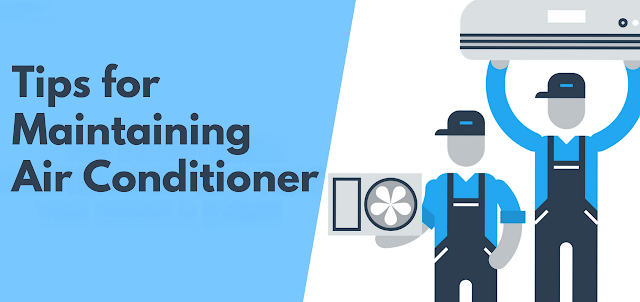1. Clean or Replace the Air Filter Regularly
Cleaning or replacing your air filter is among the simplest yet most crucial maintenance procedures. Because a clogged filter inhibits airflow, your system must work harder and use more energy. Depending on usage and filter type, check your filter at least once a month and replace it every one to three months. Replacements may be required more frequently in homes with pets or allergy problems. By absorbing dust, pollen, and pet dander, high-efficiency particulate air (HEPA) filters can enhance the quality of the air indoors.
2. Keep the Outdoor Unit Clean
The outdoor condenser unit can accumulate dirt, leaves, and debris over time, which can block airflow and reduce efficiency. To prevent this, regularly clean the unit by removing debris around it and gently washing the condenser coils with a hose. Ensure there’s at least two feet of clearance around the unit for proper airflow. Additionally, avoid planting shrubs or placing objects too close to the unit, as this can impede ventilation and make it harder for the AC to release heat effectively.
3. Check and Clean the Evaporator and Condenser Coils
Over time, dirt and dust can accumulate on the evaporator and condenser coils, reducing their ability to absorb and release heat efficiently. Clean these coils annually using a soft brush or a coil cleaner to improve the performance and longevity of your system. A clean coil ensures that your AC runs smoothly and efficiently, preventing unnecessary strain on the compressor.
4. Inspect the Thermostat
Ensure your thermostat is functioning correctly to maintain a comfortable indoor temperature without overworking the system. If your home isn't cooling properly or the temperature settings seem inaccurate, it may be time to recalibrate or replace the thermostat. Consider upgrading to a programmable or smart thermostat to optimize energy efficiency and reduce cooling costs. Smart thermostats can automatically adjust the temperature based on your schedule, leading to significant energy savings.
5. Check and Clear the Condensate Drain Line
The condensate drain line removes excess moisture from your AC system. If it becomes clogged, it can cause water leaks and lead to mold growth. Inspect and clear the drain line periodically by flushing it with a mixture of water and vinegar to prevent blockages. A clogged drain line can also lead to increased humidity levels inside your home, creating an uncomfortable environment and promoting mold growth.
6. Examine Electrical Components and Connections
Faulty electrical connections can reduce the lifespan of your AC unit and pose a safety hazard. Periodically inspect wires, capacitors, and other electrical components for signs of wear or corrosion. If you notice any frayed wires or burnt connections, it’s best to hire a professional HVAC technician to handle repairs safely. Proper electrical connections help prevent system failures and reduce the risk of fire hazards.
7. Lubricate Moving Parts
Friction between moving parts can cause wear and tear, leading to increased energy consumption and potential system failures. Lubricate components like the fan motor and bearings as needed to reduce friction and keep the system running smoothly. Lack of lubrication can result in excessive noise, overheating, and premature component failure.
8. Ensure Proper Refrigerant Levels
Low refrigerant levels can affect your AC’s cooling capacity and efficiency. If you notice a decline in cooling performance or hear unusual noises from your unit, it might be a sign of a refrigerant leak. A professional technician should check and refill the refrigerant if necessary. Incorrect refrigerant levels can strain the compressor and lead to expensive repairs or replacements.
9. Schedule Professional Maintenance
While DIY maintenance can help keep your AC running efficiently, scheduling professional maintenance at least once a year is essential. An HVAC technician can perform a comprehensive inspection, identify potential issues, and ensure that your system is in optimal condition. Professional maintenance includes checking refrigerant levels, inspecting ductwork for leaks, testing thermostat accuracy, and ensuring all components are functioning correctly.
10. Maintain Proper Airflow
Blocked vents and registers can disrupt airflow, forcing your AC system to work harder. Keep vents unobstructed by furniture, curtains, or other objects, and ensure your ductwork is clean and sealed to maximize efficiency. Proper airflow distribution throughout your home helps maintain consistent temperatures and reduces strain on the system.
11. Use Ceiling Fans to Assist Cooling
Using ceiling fans in conjunction with your air conditioner can help circulate cool air more effectively, reducing the workload on your AC unit. This can lead to lower energy consumption and improved cooling performance. Ensure that ceiling fans are set to rotate counterclockwise during the summer months to push cool air downward.
12. Shade Windows and Reduce Heat Gain
Excess heat entering your home can make your air conditioner work harder. Use blinds, curtains, or reflective window films to reduce heat gain during the hottest parts of the day. Installing energy-efficient windows or adding exterior shading, such as awnings, can also help lower indoor temperatures.
Conclusion
Proper air conditioner maintenance is essential for maximizing efficiency, extending its lifespan, and ensuring optimal performance. Following these simple yet effective maintenance tips can reduce energy costs, avoid expensive repairs, and maintain a consistently cool and comfortable indoor environment.
If you ever face a major issue, don't hesitate to seek help from a professional home technician for expert solutions. Investing in regular upkeep will not only enhance your AC’s longevity but also improve indoor air quality and overall home comfort.
For top-quality air conditioners and reliable accessories, consider purchasing from Star Tech—your trusted destination for premium cooling solutions. Start maintaining your AC today and enjoy uninterrupted comfort all year round!


No comments:
Post a Comment